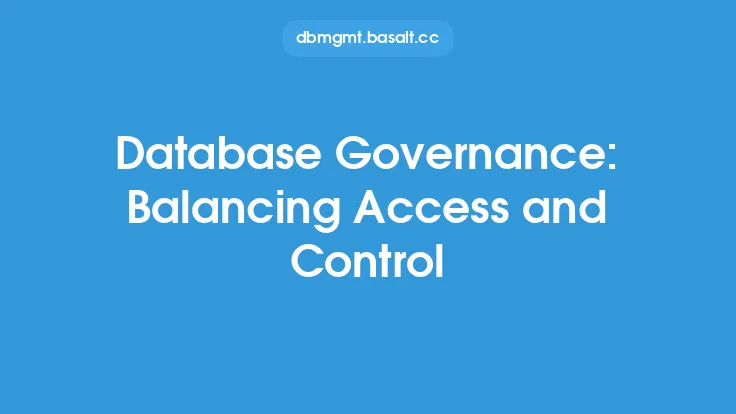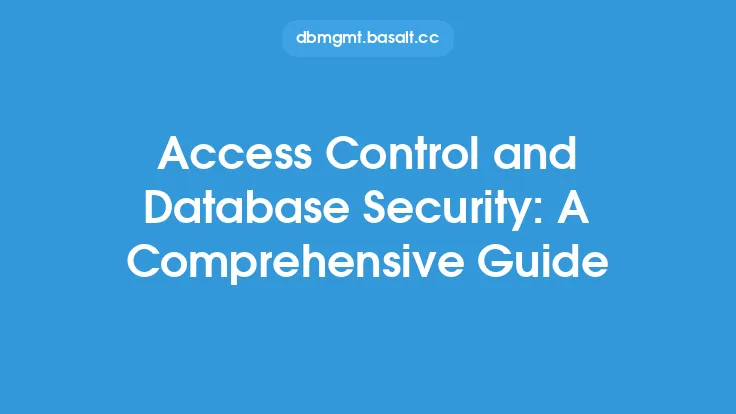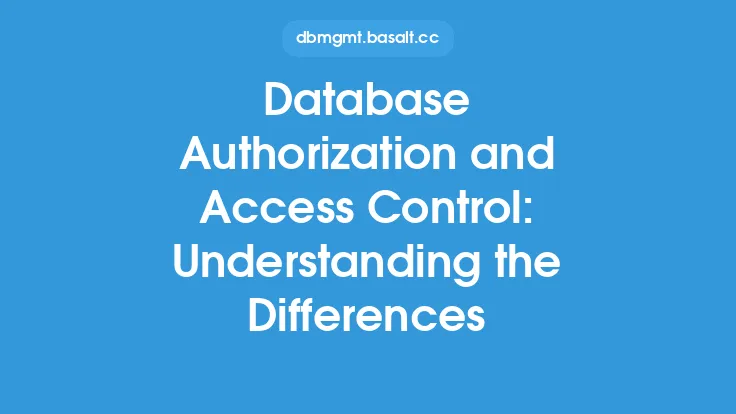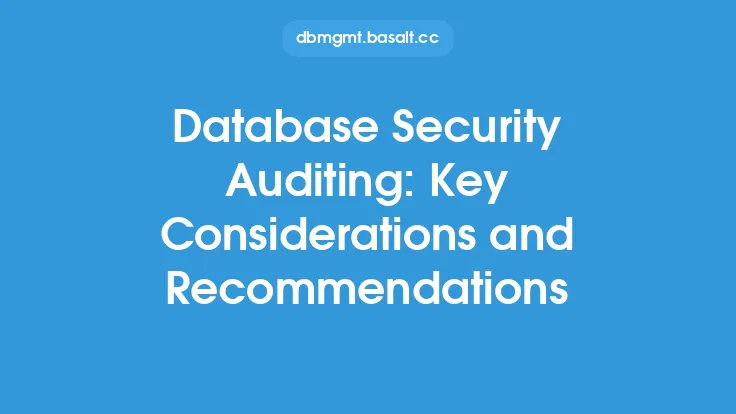Database compliance is a critical aspect of database administration, and two key components that play a significant role in ensuring compliance are data encryption and access control. These components work together to protect sensitive data from unauthorized access, theft, or tampering, and are essential for maintaining the confidentiality, integrity, and availability of data.
Introduction to Data Encryption
Data encryption is the process of converting plaintext data into unreadable ciphertext to prevent unauthorized access. It is a crucial aspect of database compliance, as it ensures that even if an unauthorized user gains access to the data, they will not be able to read or exploit it. There are several types of encryption algorithms, including symmetric key encryption, asymmetric key encryption, and hash functions. Symmetric key encryption uses the same key for both encryption and decryption, while asymmetric key encryption uses a pair of keys: one for encryption and another for decryption. Hash functions, on the other hand, are one-way encryption algorithms that produce a fixed-size string of characters, known as a message digest, from input data.
Access Control Mechanisms
Access control is another critical component of database compliance, as it ensures that only authorized users have access to sensitive data. There are several access control mechanisms, including authentication, authorization, and auditing. Authentication is the process of verifying the identity of users, while authorization is the process of granting or denying access to resources based on user identity. Auditing is the process of tracking and monitoring user activity to detect and prevent unauthorized access. Access control mechanisms can be implemented using various techniques, including role-based access control (RBAC), mandatory access control (MAC), and discretionary access control (DAC). RBAC grants access to resources based on user roles, while MAC grants access based on user clearance and resource classification. DAC, on the other hand, grants access based on user identity and resource ownership.
Implementing Data Encryption and Access Control
Implementing data encryption and access control requires careful planning and execution. The first step is to identify sensitive data and classify it based on its sensitivity and importance. This classification will determine the level of encryption and access control required. The next step is to choose an encryption algorithm and implement it using a suitable encryption tool or software. For access control, the first step is to define user roles and responsibilities, and then implement access control mechanisms using a suitable access control tool or software. It is also essential to regularly review and update access control policies to ensure that they remain effective and relevant.
Best Practices for Data Encryption and Access Control
There are several best practices for implementing data encryption and access control. For data encryption, it is essential to use a secure encryption algorithm, such as AES or RSA, and to use a sufficient key size to prevent brute-force attacks. It is also essential to store encryption keys securely, using a secure key management system. For access control, it is essential to implement a least privilege access model, where users have only the necessary privileges to perform their tasks. It is also essential to regularly review and update user access privileges to ensure that they remain relevant and effective. Additionally, it is essential to implement auditing and logging mechanisms to track and monitor user activity, and to detect and prevent unauthorized access.
Technical Considerations
From a technical perspective, implementing data encryption and access control requires careful consideration of several factors, including data storage, data transmission, and data processing. For data storage, it is essential to encrypt data at rest, using a secure encryption algorithm, and to store encryption keys securely. For data transmission, it is essential to encrypt data in transit, using a secure encryption protocol, such as SSL or TLS. For data processing, it is essential to implement access control mechanisms, such as RBAC or MAC, to ensure that only authorized users have access to sensitive data. Additionally, it is essential to consider the performance impact of encryption and access control, and to optimize database performance accordingly.
Conclusion
In conclusion, data encryption and access control are critical components of database compliance, and are essential for protecting sensitive data from unauthorized access, theft, or tampering. By implementing secure encryption algorithms, access control mechanisms, and key management systems, organizations can ensure the confidentiality, integrity, and availability of their data. Additionally, by following best practices, such as using secure encryption algorithms, implementing least privilege access models, and regularly reviewing and updating access control policies, organizations can ensure that their data encryption and access control mechanisms remain effective and relevant. By prioritizing data encryption and access control, organizations can maintain compliance with regulatory requirements, protect their reputation, and prevent financial losses due to data breaches.





